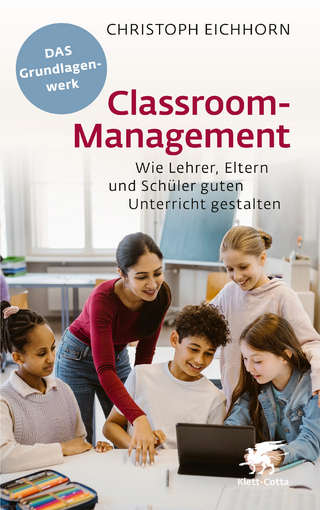
Enduring Questions
Rowman & Littlefield (Verlag)
978-1-4758-6536-3 (ISBN)
Children’s literature is ubiquitous in preschool and elementary school classrooms and in school libraries. Teachers use children’s literature for pedagogical purposes and to excite children’s imaginations and expose them to “worlds” beyond their own experience. Over the past thirty years, teachers have increasingly used children’s literature to expose their students to cultural, racial, and religious diversity as well as introducing their students to issues of social justice and social equity. Unfortunately, Jewish children’s literature is often absent in the preschool and elementary school classroom. When it is present, it is almost exclusively Holocaust literature. The result is that Jewish people are nearly invisible in the children’s literature found in preschool and elementary school classrooms and when it is available, it presents a “picture” to children of Jews as victims. The purpose of our book is to address this problematic situation and provide teachers with guidance in the use of Jewish children’s literature in the preschool and elementary school classroom.
There is a broad range of authentic, high quality Jewish children’s literature that could be used by preschool and elementary school teachers regardless of how many Jewish children they have in their class. It is as important for teachers with no Jewish children in their classroom as it is for teachers with some or many Jewish children in the class to expose all of their students to Jewish children’s literature. Our book introduces preschool and elementary teachers to a broad range of high-quality children’s literature books and stories and provides them with background information so that they can use Jewish children’s literature thoughtfully with their students.
David Bloome is emeritus professor in the Department of Teaching and Learning of The Ohio State University College of Education and Human Ecology. Evelyn B. Freeman is professor emerita at The Ohio State University where she taught courses in children’s literature and language arts, prepared elementary teachers, and worked with graduate students. She retired as dean and director of The Ohio State University at Mansfield. Rosemary Horowitzwas a member of Appalachian State’s faculty for more than a quarter century, Dr. Horowitz was highly-committed Holocaust educator and English professor. Laurie Katz is professor in the Department of Teaching and Learning of The Ohio State University College of Education and Human Ecology.
Dedication
Acknowledgments
Permissions
Introduction – Why and How to Use Jewish Children’s Literature in the Preschool and Elementary School Classroom
Chapter 1: What makes Jewish Children’s Literature Jewish?
Chapter 2: What Is Our Story? What Is Our History? A Brief History of Jewish Children’s Literature
Chapter 3: What Is Love? Stories of Family, Friendship, Animals, and Nature
Chapter 4: What is Time? Jewish Rites and Holidays Through Jewish Children's Literature
Chapter 5: What is Wisdom and What Is Foolishness? Humor in Jewish Children’s Literature
Chapter 6: What Is Evil? How Might We Respond to Evil? Jewish Children’s Literature, Antisemitism, and the Holocaust
Chapter 7: What is Justice? What is a Righteous Person to Do? Jewish Children’s Literature and the Pursuit of Tikkun Olam
Chapter 8: How Might We Imagine A Life For Ourselves Together In The World? Using Jewish Children’s Literature in Multicultural Education
Glossary
Appendices
Appendix A: Select List of Jewish Children’s Literature Organized by Topics / Themes
Appendix B: Select Resources for Using Jewish Children’s Literature in the Preschool Through Elementary Classroom
Appendix C: Select List of Professional and Scholarly Books and Articles on Jewish Children’s Literature
Index
About the Authors
| Erscheinungsdatum | 08.11.2022 |
|---|---|
| Verlagsort | Lanham, MD |
| Sprache | englisch |
| Maße | 152 x 228 mm |
| Gewicht | 336 g |
| Themenwelt | Schulbuch / Wörterbuch |
| Sozialwissenschaften ► Pädagogik ► Schulpädagogik / Grundschule | |
| ISBN-10 | 1-4758-6536-8 / 1475865368 |
| ISBN-13 | 978-1-4758-6536-3 / 9781475865363 |
| Zustand | Neuware |
| Haben Sie eine Frage zum Produkt? |
aus dem Bereich


